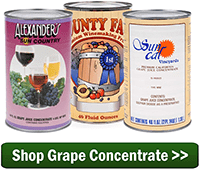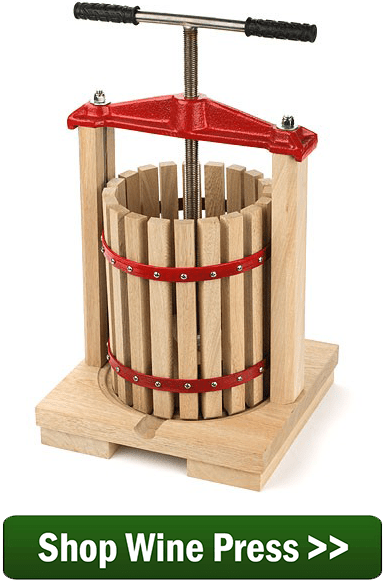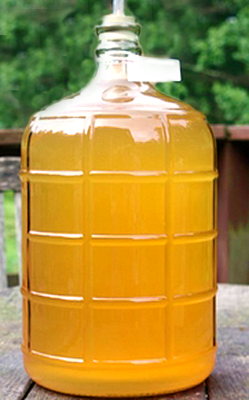 I have tried to make fresh Peach wine, it has been six weeks and it still is not clear, I followed all the basis steps in wine making, even put a clearing agent in it. Do I need just to weight longer.
I have tried to make fresh Peach wine, it has been six weeks and it still is not clear, I followed all the basis steps in wine making, even put a clearing agent in it. Do I need just to weight longer.
Thanks Tbone
—–
Hello Tbone,
What your wine may be experiencing is what’s called a pectin haze. Peach wines are notorious for having this kind of fault.
Certain fruits have a lot more pectin in them than others. Pectin is the thick, gelatinous stuff that holds the fruit’s fiber together. Peaches, strawberries and certain other fruits have an abundance of it. Normally, pectin is broken down by the yeast during the fermentation and does not cause any issues. The yeast actually produce enzymes that help to break-down the pectin resulting in a clear wine. But when there is more pectin than the yeast can handle, the result is a pectin haze.
A pectin haze cannot be settled out by a fining agent such a bentonite, isinglass or other clarifier designed to settle out particles. That’s because a pectin haze is not made up of particles. It’s made up of an organic structure that is bound to the wine itself. The only way to rid yourself of it is to break down its molecular structure.
This is where pectic enzyme comes in. If you did not add pectic enzyme to this batch, or used pectic enzyme that was too old, a pectin haze is most likely what you are dealing with. Pectic enzyme is additional enzyme that can be added to the fermentation to help the yeast break down the pectin cells. The yeast produce it naturally during the fermentation, but with some fruit – such as your peaches – it’s just not enough. More pectic enzyme needs to be added.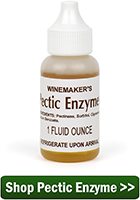
At this point, I would go ahead and add a double-dose of pectic enzyme to this batch. The amount will vary depending on the type of pectic enzyme you are using. Just double the recommend dosage that is stated on the container it came in.
If you purchased the pectic enzyme from us, that would be a 1/4 teaspoon per gallon – a standard dose is 1/8 teaspoon. Be sure to rack the wine into a clean fermenter first so that you do not stir up any sediment when mixing in the pectic enzyme.
The results will not be immediate. It takes pectic enzyme longer to work once the activity of the fermentation has gone. But if a pectin haze is what you are dealing with, you should start to see improvements in the wine’s clarity within a couple of weeks.
—–
Ed Kraus is a 3rd generation home brewer/winemaker and has been an owner of E. C. Kraus since 1999. He has been helping individuals make better wine and beer for over 25 years.
Category Archives: Wine Making Ingredients
Mary's Wine Has A Pectin Haze, But Does That Mean It's Ruined?
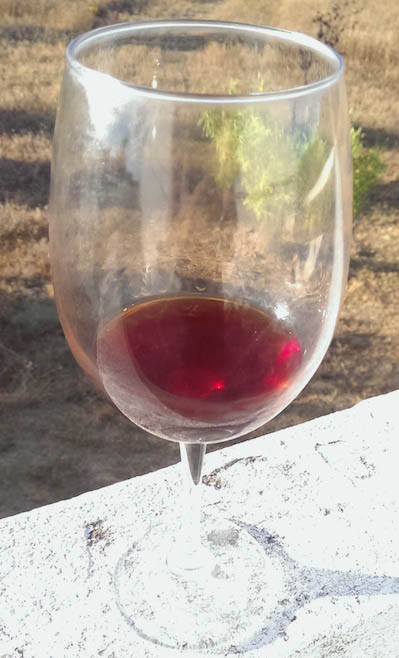 I made 5 gallons of pear wine from fresh pears and added a half gallon of citrus pomegranate from concentrate which was cloudy thus my wine is cloudy. I added Kitosol 40 after second racking and it partially cleared the wine. Can I add more Kitosol or this is as clear as it will get?
I made 5 gallons of pear wine from fresh pears and added a half gallon of citrus pomegranate from concentrate which was cloudy thus my wine is cloudy. I added Kitosol 40 after second racking and it partially cleared the wine. Can I add more Kitosol or this is as clear as it will get?
Name: Mary
State: Indiana
—–
Hello Mary,
Sounds like you might have a problem, Mary. Let’s see what we can do to help you out.
The reason pomegranate juice is cloudy is because it has an abundance of pectin in it. Pectin is not a particle that clears out with fining agents such as Kitosol 40 or Bentonite. It is something that is organically bonded to the wine. It’s not a particle; it’s actually part of the juice. This is know as a pectin haze.
When a wine fermentation occurs the wine yeast produce, among other things, pectic enzymes. During the fermentation the pectic enzymes break-down the pectin that may be in the wine must causing the juice to become clear. The activity of the fermentation itself, helps to energize this organic process. This is why it is possible make a clear pomegranate wine. That’s why a peach wine can start out cloudy and end up clear.
Most fruit wine recipes will call for additional pectic enzyme to be added on top of what the wine yeast will produce, as well. This helps to insure that you have a wine that is clear of a pectin haze. If you take a look at another blog post, “Why Do Wine Recipes Call For Pectic Enzyme“, you can read a little more about pectic enzyme and what it does.
In your case, you added pomegranate juice to the pear wine after the fermentation was complete, so you do not have any fermentation activity to help the pectic enzymes along in clearing up the pectin haze in your wine. This means you need to boost the pectic enzyme level in the wine. It also means you will need to be patient. It may take some time for your pear wine to become clear, if it’s able to clear at all.
Here’s what you can do. If you did not add pectic enzyme to the wine originally, then add two times the dosage recommend on the container the pectic enzymes comes in. If you added a dose of pectic enzyme to the wine already, than add another full dose. Be sure to blend it in completely. It may take some time for the wine to clear, months even. And even at that, there is a possibility that the pectic enzyme many not be able to clear up the pectin haze at all, since it is without the energy of an active fermentation.
Beyond this, you can add another pack of Kitosol 40. It may clear up your wine even more by dropping out yeast particles and other proteins that may still be lingering in the wine, but when it comes to the last bit of clearing, it is going to be up to the pectic enzyme to do the job.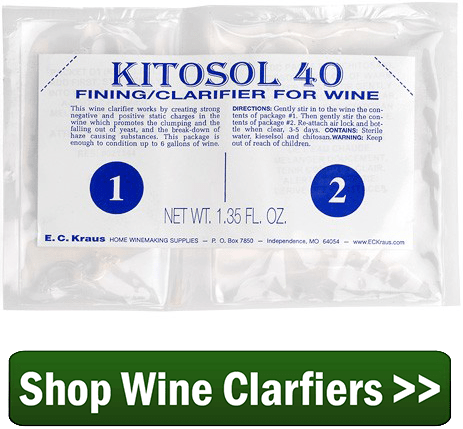
In a worst case scenario, the pectin that is making the wine cloudy does not affect the wine’s flavor in any way. A pectin haze only affects the wine visually. So at a bare minimum you should have just as good of wine as ever that you can enjoy taste-wise.
Mary, I hope this information helps you out and you end up with a perfect clear pear/pomegranate wine.
Happy Winemaking,
Ed Kraus
—–
Ed Kraus is a 3rd generation home brewer/winemaker and has been an owner of E. C. Kraus since 1999. He has been helping individuals make better wine and beer for over 25 years.
Table Grapes Vs. Wine Grapes For Wine Making
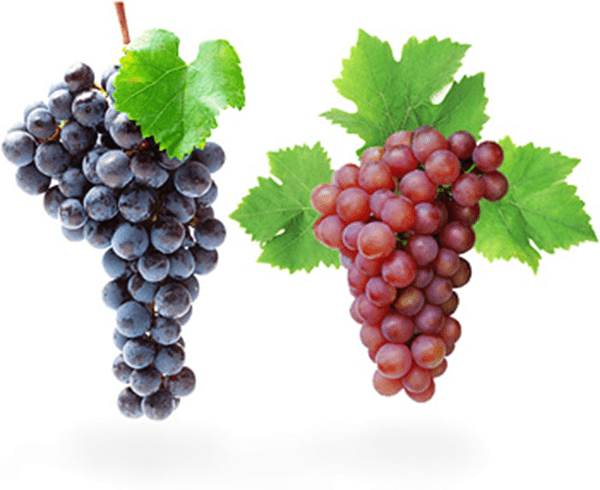 Hello Kraus,
Hello Kraus,
Please explain to me what is the difference between wine grapes and table grapes.
Thank you,
Mert B.
—–
Hello Mert,
This is a great question and one that gets down to the basics of learning how to make your own wine.
There are many significant differences between wine making grapes and table grapes – eating grapes as you called them:
Table grapes are crunchy-er with a stronger skin and firmer pulp than wine grapes. This not only makes them more pleasant and appealing to eat, but it also makes them hold up to the rigors of being transported long distances to your local market. As a consequence, grape you buy at the store tend to have less juice in relation to the amount of pulp.
The juice you get from the eating grapes is also not as sweet as the juice from wine grapes. A typical brix reading for table grapes is 17 to 19, whereas wine grapes are around 24 to 26 brix. This is important because it is the sugar that gets turned into alcohol during a fermentation — less sugar, less alcohol.
*Brix is a scale that represents the amount of sugar in a liquid as a percentage. It is the standard scale used by refractometers which are used to take these readings in the vineyard.
Another significant difference is that the acidity level of table grapes tend to be slightly lower that the average wine grape. This is to increase the grapes impression of sweetness while on the market. 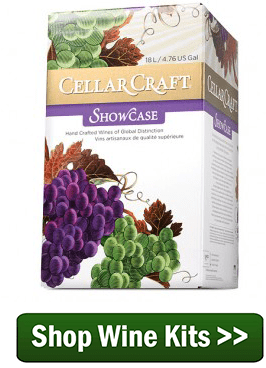
Having said all this, you can learn how to make your own wine using grapes you buy from the grocery store. You can run them through grape presses to get all the pulp out of the way. You can add extra sugar to bring the brix level up to that of a wine grape juice. And, you can adjust the acidity of the juice by adding acid blend to raise the acid level to what’s need for wine.
But all of this will not change the leading factor that makes a table grape far different from a wine grape… and that is flavor. While table grapes taste fine for popping into your mouth as a snack, once fermented, the flavor of the resulting wine is fairly uneventful and could also be described as non-existent.
While table grapes could be used for learning how to make your own wine – as a practice run, so to speak – do not expect this wine to bring any enthusiastic raves from family, friends and neighbors. The wine will be drinkable and may even be pleasant, but it will not be stellar.
Mert, I hope this answers your question about table grapes and wine grapes. It is a question that we get fairly often, so I plan on posting it on our wine making blog. If you have anymore questions, just let us know. We want to do everything we can to help you become a successful home winemaker.
Happy Wine Making
Ed Kraus
—–
Ed Kraus is a 3rd generation home brewer/winemaker and has been an owner of E. C. Kraus since 1999. He has been helping individuals make better wine and beer for over 25 years.
When Should I Filter My Wine?
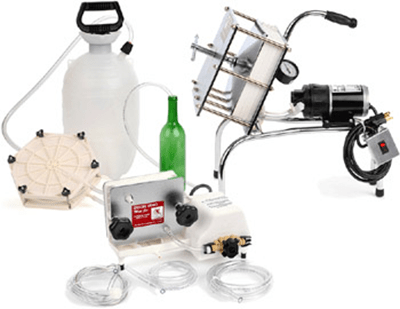 When should I filter my wine? I have a wine that is about 4 months old and I’m wondering if it is to early to filter it.
When should I filter my wine? I have a wine that is about 4 months old and I’m wondering if it is to early to filter it.
Don
—–
Hello Don,
When first learning how to make your own wine it is important that you don’t become too impatient, however since the wine has been bulk-aging for 4 months, I would say you’ve been patient enough. It would be fine to filter your wine at this time.
One of the more common wine making tips I share with beginning winemakers is:
“Never filter a cloudy wine. The wine should be done fermenting and look clear before filtering”.
You can verify that the wine is done fermenting by testing it with a wine hydrometer. You should be getting a test reading of .998 or less. For more information about this you may want to take a look at the article, “Getting To Know Your Hydrometer” listed on our website.
A wine filter is not designed to remove visible particles from a wine. A wine filter is designed to take out very fine particles, smaller than the human eye can see. This gives the wine a beautiful, polished appearance. It brightens the wine.
With this in mind, it is important to make sure that all the sediment that can fall out of the wine on its own has done so, otherwise the extremely fine filter pads that are used in the wine filter will clog up very quickly.
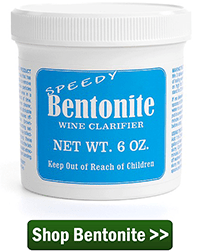 If you are making wine from wine concentrates, the sediment will fall out fairly easily on its own in a week or two, but if you are making wine from fresh grapes or some other fruit, getting all the sediment to drop out can sometimes be challenging. For this reason, it is suggest that you treat the wine with bentonite before filtering.
If you are making wine from wine concentrates, the sediment will fall out fairly easily on its own in a week or two, but if you are making wine from fresh grapes or some other fruit, getting all the sediment to drop out can sometimes be challenging. For this reason, it is suggest that you treat the wine with bentonite before filtering.
Speedy bentonite is a fining agent that will help speed up the natural falling-out of the sediment so you can filter your wine sooner and more efficiently. To learn more about fining agents you may want to reading the article, “Using Finings To Improve Your Wine“.
You will also want to rack the wine off the sediment before filtering the wine. This will eliminate the chance of drawing sediment into the wine filter.
There is another, more simple, way to answer the question: When should I filter my wine? Filter the wine when it is ready to be bottled. Make it the last step the wine goes through before it is put to rest in the bottle. There is no advantage to filter the wine before that time.
Happy Wine Making,
Ed Kraus
—–
Ed Kraus is a 3rd generation home brewer/winemaker and has been an owner of E. C. Kraus since 1999. He has been helping individuals make better wine and beer for over 25 years.
Champagne Celebration: Make your Next Party Sparkle
 Making your own Champagne (*cough* sparkling wine for us home wine-makers) is not much different from the traditional home wine-making process. By simply substituting your yeast and adding more sugar, you can add bubbles to your favorite wine recipe or concoct a brand new favorite that is best suited as a sparkling wine. Champagnes and sparkling wines can be expensive and we want to help you get the best bubbles for your buck.
Making your own Champagne (*cough* sparkling wine for us home wine-makers) is not much different from the traditional home wine-making process. By simply substituting your yeast and adding more sugar, you can add bubbles to your favorite wine recipe or concoct a brand new favorite that is best suited as a sparkling wine. Champagnes and sparkling wines can be expensive and we want to help you get the best bubbles for your buck.
We know you’ve heard this 1,000 times before, but we are obligated to say it again – most Champagnes available are not truly champagne, but are actually sparkling wines. True Champagne must be produced in the legally identified northern region in France and have the fermentation process (giving the wine its bubbles) occur in the bottle. The Champagne Bureau in Washington, D.C. works to educate U.S. consumers about the uniqueness of the wines of the Champagne region in France and expand their understanding of the importance that location plays in the creation of all wines. You can find out more about the Bureau Du Champagne, USA on their website.
Now that formalities have been established and expectations are set, making your own Champagne (but actually sparkling wine) is an easy addition to the wine-making process and can be done so for a relatively inexpensive cost. Of course, this will be far from the authentic method for making Champagne, but you will get a similar desired effect. Adding a dry white/sparkling yeast will ferment crisp and dry, as well as low in foam, to make your favorite wine recipe bubbly!
Whether the occasion is New Year’s Eve, celebrating a birthday, or just relaxing after a long day, here are two recipes that will be sure to hitch your taste buds on the bubbly bandwagon.
Pro tip: You’re going to need a hydrometer for this champagne recipe.
Essential tools for the job:
• Dry White/Sparkling Yeast
• Bottles (need 6 per gallon)
YOU MUST USE CHAMPAGNE BOTTLES. Regular wine bottles will not even begin to hold the pressure that will be produced.
• Wire Hoods
• Champagne Stoppers
• Champagne Foil Capsules (optional)
Directions:
Step One: Start with your favorite base wine, Follow the The 7 Easy Steps to Make Wine all the way through fermentation. Be sure to use your Dry White/Sparkling Yeast.
Step Two: Siphon the wine into an open bucket after fermentation. The wine should be a little cloudy at this point, add some yeast sediment to the bucket from the bottom of the fermentation bottles if it is not.
Step Three: Make and add simple sugar syrup (ratio: 100 grams of cane sugar per gallon of wine). Simply heat to boil a mixture of two parts sugar to one part water to make the syrup. Stir the syrup while adding to the wine and be gentle!
NOTE: You must confirm with a hydrometer that the original fermentation has completed before adding the sugar syrup. Otherwise, too much carbonization will occur in the bottle. This can be done by making sure the hydrometer reads .998 or less on the specific gravity scale.
Step Four: Immediately siphon the wine champagne bottles and add their caps. Again, you MUST use champagne bottles as regular wine bottles will NOT be able to handle the pressure.
Step Five: Store the bottles upright and in a cool place for at least three months. Let the wine stand until it is crystal clear (this may take an additional month or two). After this standing period, refrigerate and store the bottles at 32 °F
Step Six: Open, pour, and enjoy!!
For our ambitious wine-makers, you can also follow the full process as done in the Champagne region of France to make your home wine as authentic as possible. Though don’t despair about getting your homebrew exactly right, they’ve had centuries to perfect the recipe and process. Pressing, first fermentation, assemblage, second fermentation, remuage, aging (for a least 15 months), disgorgement, dosage, and the finishing touch of corking and consuming have all been dialed-in to a science for creating the perfect Champagne. You can read more on this traditional methode Champenoise or methode traditionelle process from Fine Wine Concierge.
You can also try adding fruit to your champagne or sparkling wine recipe to enhance the flavors and add a new layer of fun to your wine making process. Enjoy your bubbles!
Happy Wine Making,
Ed Kraus
—–
Ed Kraus is a 3rd generation home brewer/winemaker and has been an owner of E. C. Kraus since 1999. He has been helping individuals make better wine and beer for over 25 years.
Featured Product
[bigpres skus=”GL310″ overlay=”no” animation=”fade” direction=”top” show_img=”yes” show_name=”yes” show_price=”yes” show_arrow=”no” hide_button=”no” link_to=”product” per_row=”4″ size=”medium” type=”card” show_content=”no” drop_shadow=”yes” /]
Does Making Bentonite Additions To A Wine Have A Downside?
 I’ve been reading about bentonite fining in my wine and would like to know what is the downside of using this stuff? I understand what it does, but was thinking – if there is no downside then I should use it in every wine I make. What is your response to that, please!
I’ve been reading about bentonite fining in my wine and would like to know what is the downside of using this stuff? I understand what it does, but was thinking – if there is no downside then I should use it in every wine I make. What is your response to that, please!
Steven
_____
Hello Steven,
Commercial wineries routinely make bentonite fining additions to the wine right after the fermentation. It is used at this time because it is effective in taking out large amounts of solids fairly quickly. It speeds up the clearing process.
Bentonite additions to a wine will not only take the bulk of the yeast out, but it will also take out other protein based particles such as tannin, color pigmentation and other pulp-related materials. So much so, that one might say it is too good.
For this reason one must be careful not to use more bentonite fining than is necessary to get the job done. Using too much bentonite in the wine can result in a decrease in body, color and overall character of the wine. This is the potential downside.
can result in a decrease in body, color and overall character of the wine. This is the potential downside.
Fortunately, bentonite fining is efficient enough that it will do the job before threatening dosages come into play. Follow recommended dosages and you will have not have a problem. And yes, we recommend using it on any fresh fruit wine.
The bentonite fining we sell comes with detailed directions and a recommended dosage that is considered conservative. If these directions are followed and the recommended dosage is adhered to, your wine will not be negatively affected in any way.
While bentonite is effective in removing a lot of particles quickly, there are times when it will not remove the last little bit that is required to bring a polish to your wine. If you discover that a single bentonite fining addition was unable to add a bright color to the wine, then I would suggest that you go to another fining agent for a second treatment.
 Wineries will turn towards fining agents that have more polishing qualities as a follow-up treatment. These would include fining agents such as Sparkolloid, isinglass and Kitosol 40.
Wineries will turn towards fining agents that have more polishing qualities as a follow-up treatment. These would include fining agents such as Sparkolloid, isinglass and Kitosol 40.
So in short, yes it’s not a bad idea to automatically make bentonite addition to your wines right after fermentation. There is little to no downside in doing so. Just be aware that it is so effective that there are limitations to how much you’ll want to use. Stick to the recommended dosages and your wine will be fine.
Happy Wine Making!
How Much Wine Yeast Do I Use?
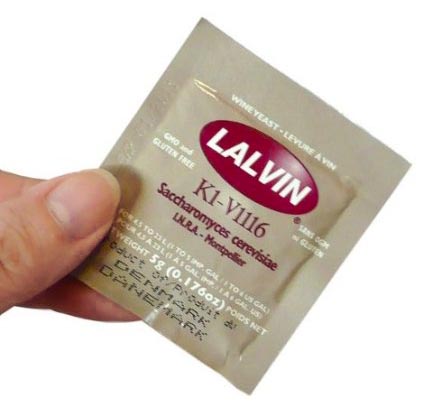 I completed a wine recipe for 1 gal of Dandelion Wine. My Question is: The packet of wine yeast I received was enough for 5 gals of wine. In my logic I decided to just use on 1/5 of the yeast. I poured all the yeast out on a dish and divided it into 5 equal portions. Then I used just 1/5 of the yeast for my 1 gal of wine. Was this correct? I don’t know how much wine yeast to use.
I completed a wine recipe for 1 gal of Dandelion Wine. My Question is: The packet of wine yeast I received was enough for 5 gals of wine. In my logic I decided to just use on 1/5 of the yeast. I poured all the yeast out on a dish and divided it into 5 equal portions. Then I used just 1/5 of the yeast for my 1 gal of wine. Was this correct? I don’t know how much wine yeast to use.
Thanks,
Bill
—–
Dear Bill,
Thank you for this great question on how much wine yeast to use. You’ve done what many home winemakers have done. It make perfect sense and is very logical. However, the amount of wine yeast you should use is one whole packet, even if you are just making 1 gallon of wine. There are a couple of reasons for this:
What you are adding to the wine is not an amount of wine yeast as much as you are adding a starting colony of yeast. The wine yeast in the packet represents the minimum number of yeast cells recommend to start a viable, active fermentation, regardless of batch size. When adding a packet of yeast to 5 or 6 gallons of wine, the yeast will typically multiply to around 100 to 150 times what you start with.
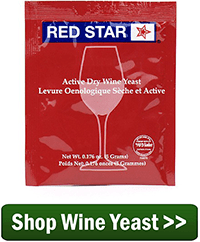 In the case of a one gallon batch of wine, the yeast will multiply to many times its original size, but not quite as many times as it does when pitched into a larger batch. The yeast will reproduce itself into great enough numbers to complete the job at hand.
In the case of a one gallon batch of wine, the yeast will multiply to many times its original size, but not quite as many times as it does when pitched into a larger batch. The yeast will reproduce itself into great enough numbers to complete the job at hand.
So, when you add a whole packet of wine yeast to 1 gallon of wine, you are not adding too much yeast. You are simply adding the minimum amount required to support a healthy, active fermentation. Adding less then a packet could result in a slow starting fermentation that will take extra time to finish the job. It may also over-work the yeast which can result in off-flavors.
There is also the issue of what to do with the rest of the wine yeast anyway. These packets of yeast are packaged under sterile – not food-grade – conditions. They are sealed with nitrogen gas to maintain this sterile level of freshness while in the package.
Once they are opened, they are no longer sterile. The seal has been compromised. So, storing an opened package of wine yeast for any length of time is really not a good idea, particularly when you weigh it against how much a packet of wine yeast costs.
for any length of time is really not a good idea, particularly when you weigh it against how much a packet of wine yeast costs.
So the answer to the question: “how much wine yeast to use?”, is very simple. Always use the whole packet up to 5 or 6 gallons. If you are making more wine than this, add a second packet.
Happy Wine Making,
Ed Kraus
—–
Ed Kraus is a 3rd generation home brewer/winemaker and has been an owner of E. C. Kraus since 1999. He has been helping individuals make better wine and beer for over 25 years.
Try This Trick When You Back Sweeten Wine
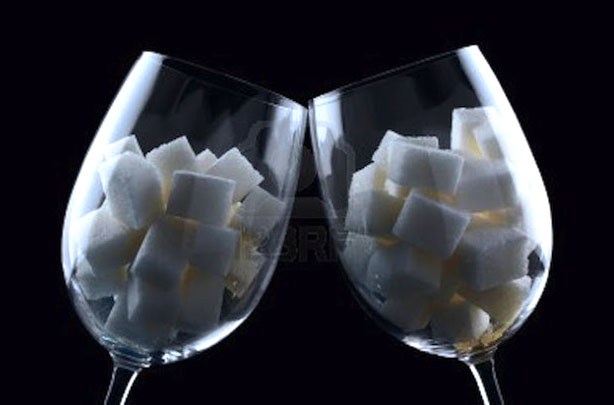 I am making European Select Chardonnay. I will be ready to bottle in a week or so. I have not done the stabilization & clarification step yet, which is when I would normally back sweeten wine. Can I complete all the steps, bottle half of it, and THEN sweeten the other half? Will the potassium sorbate added at step 4 or adding some potassium metabisulfite hinder refermentation from adding wine conditioner for sweetness? Or is the your wine sweetener non-fermentable?
I am making European Select Chardonnay. I will be ready to bottle in a week or so. I have not done the stabilization & clarification step yet, which is when I would normally back sweeten wine. Can I complete all the steps, bottle half of it, and THEN sweeten the other half? Will the potassium sorbate added at step 4 or adding some potassium metabisulfite hinder refermentation from adding wine conditioner for sweetness? Or is the your wine sweetener non-fermentable?
Betsy L.
Wisconsin (Go Pack, Go)
—–
Hello Betsy,
Thank you for your questions about how to back sweeten wine.
Your idea of – bottling half; then sweetening half; then bottling – is a great one.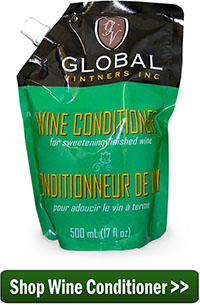 I have done this more than once. I’ve even divided one of my homemade wines into dry/semi-dry/medium. I think this is a great way to back sweeten wine because if gives you so many more options.
I have done this more than once. I’ve even divided one of my homemade wines into dry/semi-dry/medium. I think this is a great way to back sweeten wine because if gives you so many more options.
And it’s simple to do. You should have no problems pulling it off. With your 30 wine bottles in play, there’s nothing wrong with giving them some variety by way of sweetness. As you have suggested you are bottling some of the wine, sweetening what’s in bulk than bottling that.
This method of back sweetening a wine works particularly well when you plan on gifting it or sharing it with friends. It gives you a way to tailor the gift to the person you are giving it to. Quite often we want to share our wine with family and friends who are not wine drinkers. Giving them a bottle of wine that is not bone-dry makes good sense.
As for your second question on the potassium sorbate: as long as the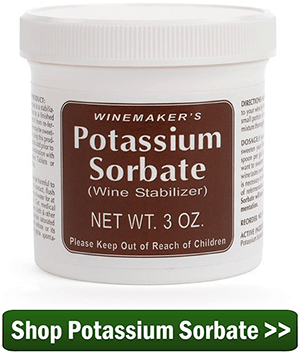 fermentation has completed and the wine has completely cleared, the potassium sorbate or potassium bisulfite will stop a re-fermentation from occurring in your wine bottles when back sweetening wine, but it is important that the wine be clear first, regardless of what day in the steps you are on. Wait an extra day or two if necessary. It won’t compromise your homemade wine in any way.
fermentation has completed and the wine has completely cleared, the potassium sorbate or potassium bisulfite will stop a re-fermentation from occurring in your wine bottles when back sweetening wine, but it is important that the wine be clear first, regardless of what day in the steps you are on. Wait an extra day or two if necessary. It won’t compromise your homemade wine in any way.
I would also suggest using our Wine Conditioner for the purpose of back sweetening the wine, just as you were planning. Wine conditioner is easy to use and has additional sorbate to help stabilize the wine. It will not adversely affect the wine in any way and will help to assure that your homemade wine does not experience a re-fermentation.
You can also back sweeten wine just by adding plain ole sugar. But if 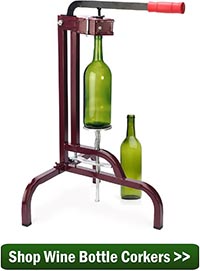 you decide to do this, I would highly recommend that you also add another 1/2 dose of potassium sorbate to the wine (1/4 teaspoon per gallon) in addition to what was with your wine ingredient kit. For others reading this, if you have not added any potassium sorbate from a kit or what-have-you, then add a full dose of potassium sorbate (1/2 teaspoon per gallon) when you back sweeten wine.
you decide to do this, I would highly recommend that you also add another 1/2 dose of potassium sorbate to the wine (1/4 teaspoon per gallon) in addition to what was with your wine ingredient kit. For others reading this, if you have not added any potassium sorbate from a kit or what-have-you, then add a full dose of potassium sorbate (1/2 teaspoon per gallon) when you back sweeten wine.
Happy Winemaking,
Ed Kraus
—–
Ed Kraus is a 3rd generation home brewer/winemaker and has been an owner of E. C. Kraus since 1999. He has been helping individuals make better wine and beer for over 25 years.
Clearing A Cloudy Wine…
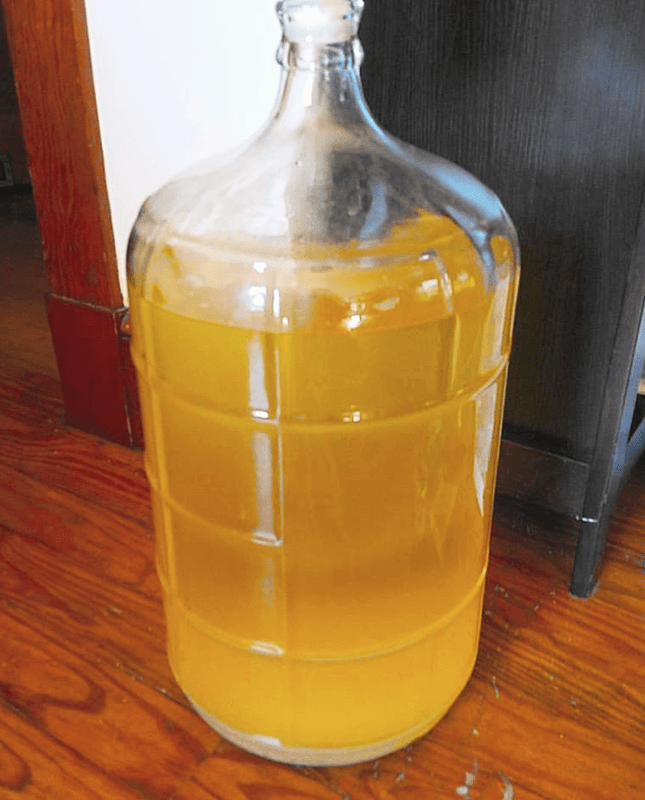 What can I use to remove the cloudiness in my wine. Can you help? I’ve strained the wine 2 times and it is still cloudy.
What can I use to remove the cloudiness in my wine. Can you help? I’ve strained the wine 2 times and it is still cloudy.
Thanks John
_____
Hello John,
What needs to be determined is, “why is the wine cloudy“? Is it from pectin cells in the fruit? Is it from suspended yeast cells? Is it from starches in the fruit? Or, is it because the wine simply needs more time to clear up?
In any case, the cause of the cloudiness needs to be determined before you can take any action. Anything less is just taking a stab at the issue. Determine why the wine is cloudy then take appropriate actions.
The first thing that should be done is a specific gravity reading should be taken with a wine hydrometer. This will tell you if the wine has completed its fermentation. If the specific gravity is .996 or less, this would indicate that the wine fermentation has finished. If the specific gravity is above .996 but not fermenting then you have a stuck fermentation and you need to determine why it is stuck.
 If the wine is still fermenting, even slightly, this would most likely be the cause of the cloudiness. In this case, just let the wine finish fermenting. Be a little patient and the wine will most likely clear in due time.
If the wine is still fermenting, even slightly, this would most likely be the cause of the cloudiness. In this case, just let the wine finish fermenting. Be a little patient and the wine will most likely clear in due time.
If the wine hydrometer has indicated that the wine has completed its fermentation, you will want to see if the top half of the batch is more clear than the bottom half. If so, this would indicate that the wine just needs a few more days to clear up. After a wine has completed fermenting it usually needs a week or two to clear up. Most homemade wine instructions will indicate this time period.
If you’re sure it’s been more than two weeks since the wine has completed fermenting, and it’s still cloudy, then it may be time to start using wine making products such as fining or clearing agents.
Treating the wine with bentonite would be the first step I would suggest. It’s an effective fining agent that most likely will solve your problem completely. But, if you see only marginal improvement, you should switch to Sparkolloid for a second treatment. In general, Sparkolloid will take out what bentonite doesn’t and vice versa.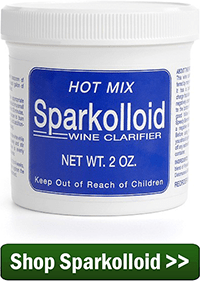
If the bentonite clears the wine almost completely, but there’s still a slight murkiness, then you should switch to a polishing clarifier such as our Kitosol 40. You might want to check out the article, Using Finings To Improve Your Wine. It will give you more detail about fining agents and other wine making products you can use to clear your wine.
Happy Wine Making
Ed Kraus
—–
Ed Kraus is a 3rd generation home brewer/winemaker and has been an owner of E. C. Kraus since 1999. He has been helping individuals make better wine and beer for over 25 years.
My Wine Recipe Doesn't Call For Yeast
I have an old wine recipe that came from Germany, through the family, but the wine recipe doesn’t call for yeast of any kind… What does the yeast do and is it essential in home wine making?
Thanks, Connee
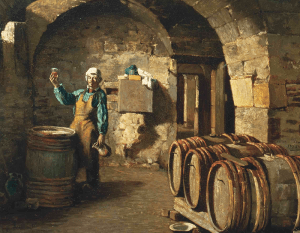
Hello Connee,
Simply put, yeast is where the rubber meets the road. Without wine yeast you’ll have no fermentation, and with no fermentation you’ll have no alcohol! That’s why it is imperative that the starting wine must has yeast of some kind, even if the wine recipe doesn’t call for yeast.
What’s Going On?…
What’s happening when you make wine is sugar is being turned into alcohol through a process called fermentation. Yeast is what performs the fermentation. Each yeast is a single-celled, living organism that literally eats the sugars that are in the wine must and turns it into alcohol and CO2 gas. This is what wine making is all about.
Where Does The Yeast Come From?
Some older wine recipes – like the one you have – will have no yeast of any kind in the recipe. This is because the yeast are expected to be provided by the fruit, naturally. Fruit, whether it be grapes, peaches, or strawberries, already have wild yeast on them so there will be a fermentation of some kind; it will just be fermenting wine without yeast you’ve added.
Using the yeast that Mother Nature provided was an acceptable practice way-back-when because wine yeast was not readily available. And, if your wine recipe is really, really old, they may not have even known that yeast doing the job. The connection between yeast and fermentation was not put together until as recently as 1857. So as you can start to see, this may be why your wine recipe doesn’t call for yeast of any kind.
Is The Wild Yeast Good Enough?
Homemade wines made from wild yeasts are marginal at best. Typically, the yeast found out in the wild have trouble fermenting to an acceptable alcohol level. The flavor and aromas they put off can be objectionable. Wild yeast wines also have a harder time clearing up. This is primarily because the yeast do not collect and clump together like domesticated wine yeast do (flocculation). The clumping helps the yeast to drop out cleanly and quickly. Domesticated wine yeast are bred to do this.
The only exception to this are some Old World wineries that rely on feral yeast from the vineyard. Feral yeast is maintained but out in nature. Great care is taken to keep the yeast strain maintained in the fields. Spent pulp from the fermentation is put back into the soils along the fines so that the yeast within the pulp can cover next year’s crops.
Yeast Today
Today things are different. Wine making yeast are readily available from wine making shops like us. These are the same strains of wine yeast used by professional wineries. They are able to ferment to an acceptable alcohol level and produce a much cleaner flavored wine. And, their cost is not that much different than buying a pack of baker’s yeast.
There is an entire array of wine yeast strains from which to choose. Each one has slightly different flavor characteristics or different qualities that make it well suited for a certain style of wine. You can find an example of some of these characteristic in this wine profile chart.
Here’s My Recommendations
My advice to you – without seeing the wine recipe – is to go ahead and follow it, but I would also add a packet of wine making yeast for every 5 or 6 gallons of must. You may also want to take a look at the article, Why Should I Use Wine Yeast that is listed on our website. This will give you a little deeper explanation about yeast and its role in wine making.
You may want to give up on using the wine recipe all together. While using a wine recipe that doesn’t call for any yeast can be done. Why risk your time an effort when there are so many more modern wine recipe available.
Happy Wine Making,
Ed Kraus
—–
Ed Kraus is a 3rd generation home brewer/winemaker and has been an owner of E. C. Kraus since 1999. He has been helping individuals make better wine and beer for over 25 years.

